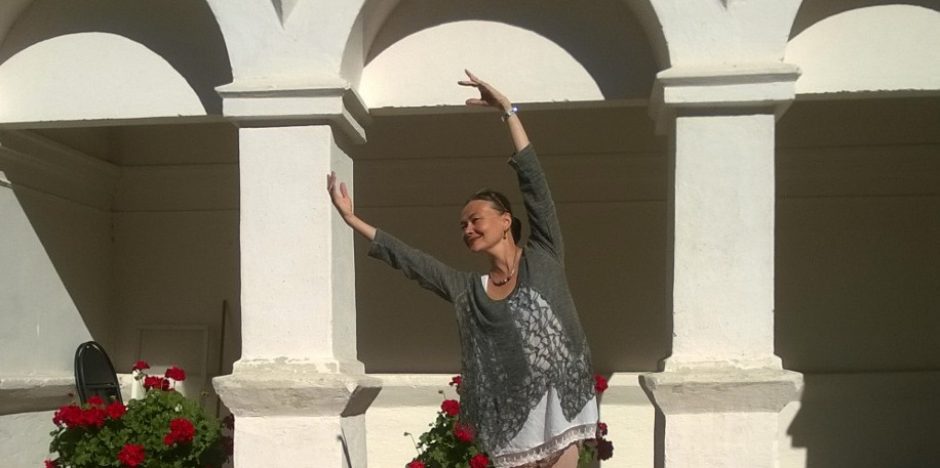Recently I crossed the Porvoo Campus lobby during a project dissemination session. I did not stop by to listen, since in a fraction of a second I had drawn my conclusions on whether to stay or not. And I decided not to. Why?
- Lobby. During my years of teaching on Porvoo Campus I have only once witnessed a speaker succeed in the Porvoo Campus lobby. Bruce Oreck. As US Ambassador and body builder he had enough mental and physical muscles to fill up the entire space with his presence during his talk on risk-taking. Interestingly, he used the whole floor space during the talk instead of just standing in one spot on that ridiculously small stage.
![1288628993142[2]](http://blogit.haaga-helia.fi/dancingenglishteacher/files/2015/12/12886289931422-300x273.jpg)
RULE 1: Consider choice of space carefully when planning a session of student presentations. A lobby is a challenging space for anybody without stage training and the message easily gets lost if the space is too big while the speaker is too small to fill it.
- Locked knees. Are you aware that you should not lock your knees while standing on stage? Locked knees lead to locked hips which in turn lead to locked shoulders. The result is a lack of flow that hinders the message of getting through.
RULE 2: Use a lot of training to unlock knees, since in intimidating situations knees tend to automatically get locked. It takes a long time for the body to unlearn certain unhealthy habits. Feel the fluid in the knee socket.
- Hands. What are those awkward gestures supposed to mean? Why are your hands so uncontrolled? Why are your arms dangling like dead leaves?
RULE 3: Hands are not an isolated entity. Hand movement starts from the shoulder blades and arm sockets and the chest should be fluid as well.
- Horizon. Why are you looking down at your feet? Why is your head hanging?
RULE 4: You should gaze over the horizon at all times and keep your eyes alert and alive. Don’t seek for support from the floor. There is nothing but dust to be found there.
- Audience skills. Is this a funeral? No? So why are you all looking so petrified with fear?
RULE 5: When an occasion such as a project dissemination is turning into a funeral, as audience, do something about it. Tap dance, sing a song, do some pause gymnastics – make everybody laugh! A teacher should be there to support the students if he/she sees them freeze. After all, there are lots of ways to make students defrost in an intimidating situation.
So now we have a simple partiture for a successful presentation. Only now are we ready to actually start sharing ideas!
My Business Ballet method is a lot about training the body into an autopilot mode for presentations and sales and service situations. The brain understands in a fraction of a second the point of not locking the knees or not looking at the feet. However, the body is painfully slow to learn. Locked knees make you tilt backwards, thus you feel “safer” as you get further away from the audience. Similarly, dropping your head and looking at the floor makes you avoid facing your audience altogether. Naturally, this all makes sense, the body possesses ancient mechanisms for dealing with fear. However, the audience will perceive this as poor presence and will most probably reject the speaker as somebody not worth listening to. That’s why we need to train the body to cope with intimidating situations such as public speaking.
Most of the students who have attended my Business Ballet course claim that the course should be compulsory, as stated by a student on this video. I tend to agree, presense is very much about technique. You can learn to be more present as speaker – yes, even to enjoy it. Undoubtedly, you cannot perform a piece of music without studying the partiture first, nor can you become a good speaker wihout understanding the notion of “Partiture of Presence”.
Finally, I choose to end with a heart-warming statement by a student who came to the course with no particular expectations:
Another nice day in the class. Feels kind of sad in a way that this course is almost at the end already. I’ve enjoyed it so much and in the process learned a lot about myself. I think everyone should take the class, since it’s important to know how to present yourself in the classroom, in public, inside a meeting room. Where ever really, because you don’t have to have a “presentation” per se to know how to carry yourself, make yourself convincing for an example in the field of business. You can improve your presence in your everyday life too, to improve your relationships and carry yourself more gracefully, make others take you more seriously. I’ve learned a lot and this course has given me a lot to think about for my future presentations and everyday situations. So thank you! Hopefully there will be other courses similar to this as well, would love to participate!
